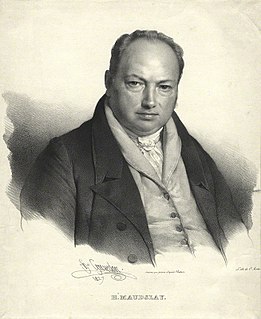
Henry Maudslay was an English machine tool innovator, tool and die maker, and inventor. He is considered a founding father of machine tool technology. His inventions were an important foundation for the Industrial Revolution.
British Standard Whitworth (BSW) is an imperial-unit-based screw thread standard.
Parsons Marine Steam Turbine Company was a British engineering company based in Wallsend, North East England, on the River Tyne. Queen Elizabeth 2 Maiden Voyage 1969 also had Parmatrada turbines.

The Fantome class was a six-ship class of 4-gun screw composite sloops built for the Royal Navy during 1873 and 1874.

The Algerine-class gunboats were a class of six 3-gun wooden gunboats built for the Royal Navy in 1857. A further pair were built in India for the Bombay Marine in 1859.

John Penn FRS (1805–1878) was an English marine engineer whose firm was pre-eminent in the middle of the 19th century due to his innovations in engine and propeller systems, which led his firm to be the major supplier to the Royal Navy as it made the transition from sail to steam power. He was also president of the Institution of Mechanical Engineers on two occasions.
J. and G. Rennie was a British engineering company based in Millwall, London, England. They were involved in manufacture of marine engines, and some complete ships, as well as other diverse onshore engineering projects. An association with railway engines is usually attributed to G. and J. Rennie, which may suggest they used a second company to keep the books separate, and there was also George Rennie & Sons, which is associated with the development and patents of the steam disc engine. All three companies appear to have been in existence at the same time.

SS Archimedes was a steamship built in Britain in 1839. She is notable for being the world's first steamship to be driven by a screw propeller.
HMS Esk was a 21-gun Highflyer-class screw corvette launched on 12 June 1854 from J. Scott Russell & Co., Millwall. She saw action in the Crimean War, the Second Opium War and the Tauranga Campaign in New Zealand, and was broken up at Portsmouth in 1870.

HMS Phoenix was a 6-gun steam paddle vessel of the Royal Navy, built in a dry dock at Chatham in 1832. She was reclassified as a second-class paddle sloop before bring rebuilt as a 10-gun screw sloop in 1844-45. She was fitted as an Arctic storeship in 1851 and sold for breaking in 1864.

HMS Basilisk was a first-class paddle sloop of the Royal Navy, built at the Woolwich Dockyard and launched on 22 August 1848.

HMS Arethusa was a 50-gun fourth-rate sailing frigate of the Royal Navy, was launched in 1849 from the Pembroke Dockyard and served in the Crimean War. In 1861 she was converted to a steam screw frigate. Decommissioned in 1874, Arethusa became a school and training ship on the River Thames, preparing young boys for maritime careers, until she was broken up in 1934.
Humphrys, Tennant and Dykes was a British engineering company based in Deptford, London, England.

The Cheerful-class gunboat was a class of twenty gunboats built for the Royal Navy in 1855 for use in the Crimean War.

The Dapper-class gunboat was a class of twenty gunboats built for the Royal Navy in 1854–55 for use in the Crimean War.

The Albacore-class gunboat was a class of 98 gunboats built for the Royal Navy in 1855–56 for use in the Crimean War.

The Clown-class gunboat was a class of twelve gunboats ordered by the Royal Navy in January 1856 for use in the Crimean War, although by the time they were completed, later that year, the Crimean War was over and some of these gunboats were sent to the Far East and took part in the Second Opium War.

The Albacore-class gunboat was a class of three gunboats built for the Royal Navy in 1883. The name had already been used for a class of 98 gunboats built during the Great Armament of the Crimean War.
William Penn was an English amateur cricketer who played for Kent County Cricket Club in the 1870s.






















